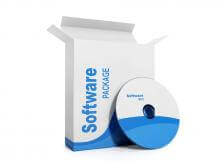Inside Tech Talker’s Backpack: Software Roundup
Dive back into Tech Talker’s backpack for Part 2 of this series on tech essentials. This time, we reveal the software Tech Talker just can’t do without.

However, this isn’t all that I carry with me. Along with great hardware and devices, I also carry an assortment of software that helps me troubleshoot, clean, organize, and stay productive on the go.
In this week’s episode we are going to dive into Tech Talker’s computer!
Sponsor: Visit GoDaddy.com to get your $2.95 .COM domain. Some limitations apply, see website for details.
As a tech expert, I’m used to often being asked by friends and family to troubleshoot and fix their computers. I’ve long since learned that carrying my own software tools with me makes my life a whole lot easier.
Virtual Machines
First and foremost are the virtual machines that I carry with me. I talked about virtual machines extensively in a previous episode where I described how and why virtual machines might be perfect for you.
I won’t go into extreme detail about that now, but in case you haven’t listened to that episode, virtual machines are basically computers within your physical computer that act like separate systems. For example you can run XP, OSX, and even Linux on a standard Windows laptop.
This is useful to me because I’ve found that every operating system has its strengths and weaknesses. Windows has a plethora of programs, Apple operating systems are great for editing video, audio, and images. Furthermore there are some great uses of Linux that Windows or Apple just can’t match.
For this reason having a handful of virtual machines allows me to have a Swiss army knife of programs suited for any job, whether that’s making a quick video on iMovie, running a quick virus scan from Linux, or backing up and recovering software in Windows. Each virtual machine has its use, and luckily for me it doesn’t add any extra weight to my laptop!
Next I’m going to cover the software that I use daily.
Software Round-Up

I have the app on my phone and the desktop version for my computer, so it’s always handy.
Next up is a favorite of mine, it’s Dropbox! I’m sure many of you are familiar with Dropbox, but if not, you’re missing out! it is an awesome tool for keeping files synced between multiple computers, and it’s also great for sharing large files that are way too big to email. (I’m talking gigabytes here, people).
There are lots of different programs that function like Dropbox – such as Google Drive, Bittorrent Sync, and Copy.com. These offer different pricing options and features. But I’ve been with Dropbox since the beginning and I find it to be the most user-friendly tool of its kind.
Also in the realm of awesome programs is Evernote which I’ve also done a full episode on. Evernote allows me to keep reminders, to-do lists, and random thoughts, images, and pictures all beautifully organized no matter where I am.
At this point, this information probably seems like a retread of topics I’ve covered in some of my previous episodes. But here’s where that changes: My bread and butter software tool that I carry around with me is my 1990s-style CD case that contains half a dozen bootable CDs.

My bootable CDs work the same way except that you don’t need to install anything. The program loads directly from the CD to the memory of the computer. This is awesome because many versions of Linux such as Ubuntu allow you to burn the entire operating system to a disc and then you can run it on almost any computer, plus you can easily run some handy back up, recovery, and antivirus tools this way.
If you’re not sure how to make a bootable CD, you can often find instructions readily available online. Here’s one great tutorial I found.
My four main bootable CD’s are Hiren’s Boot Disc, Ubuntu, Kali, and Kaspersky.
Here’s a quick summary of each:
Hiren’s boot disc has a handful of tools such as antivirus scanners, text editors, and file recovery tools that make it pretty indispensable. It looks very similar to Windows XP, and it allows you to clean viruses and recover files no matter how much crud there is lurking on your hard drive.
Ubuntu is probably one of the friendliest versions of Linux that is completely free to anyone who wants to use it. Anyone familiar with a Windows or Mac computer could easily use Ubuntu in a few minutes. I use it mainly as a tool to test hardware. It comes with a system analyzer that allows you to scan a computer for hardware issues such as failing hard drives or for dying memory. I also keep it around to give to people who are interested in learning Linux but don’t want to install it on their machine.
I also carry another version of Linux with me called Kali. This is the updated version of BackTrack, which is a freely available operating system used for security analysis. This operating system can be used to probe for holes in networks, firewalls, websites and a number of other things. It’s useful for making sure my friends and family’s computers are nice and secure!
Last but not least is Kaspersky. The Kaspersky boot disc is an awesome antivirus program that allows you to scan, detect, and remove viruses from your computer without needing to install anything. I use this when I find a computer that is so heavily infected with viruses that I can’t even install basic software on it.

Well, that’s it for today! Be sure to check out all my earlier episodes at quickanddirtytips tech-talker. And if you have further questions about this podcast or want to make a suggestion for a future episode, post them on Facebook QDTtechtalker.
Until next time, I’m the Tech Talker, keeping technology simple!
Software box and other images courtesy of Shutterstock.






